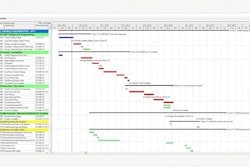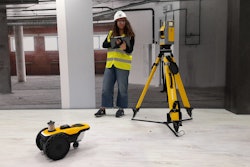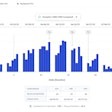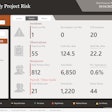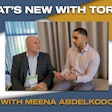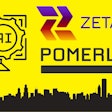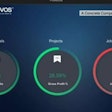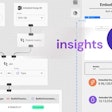
Oracle has a long history and multiple acquired and organically-developed products for the construction industry, including the venerable J.D. Edwards, E-Business Suite and modern Oracle Cloud Enterprise Resource Planning (ERP) and Oracle Cloud Human Capital Management (HCM) products.
These products are the best fit for the highest end of the market. Due to the degree of configurability and the requisite professional services, an instance of Oracle Cloud ERP or Oracle Cloud Human Capital Management starts to become appealing for contractors with about $250 million in annual revenue and up—due in large part to the fact that implementation alone can run into seven figures, even before the annual product subscription cost or opportunity to realize value kick in.
Of course ERP got its start in repetitive manufacturing, so software that addresses construction as one of a number of vertical industries often has to be extended by industry solutions from a third party independent software vendor (ISV) to meet certain project accounting, union payroll, equipment and project management requirements. Oracle Cloud ERP may be extended, for example, by Inoapps Construction Cloud. Netsuite, a multitenant software-as-a-service (SaaS) ERP product that Oracle owns and markets further down market than single-tenant Oracle Construction Cloud, also will come to market with ISVs like ScaleNorth, Appficiency or FullClarity to complete a construction solution.
Some of Oracle’s other products in construction, like Primavera P6, can and do go deeper into the middle market and smaller growth contractors. Oracle Primavera Cloud is part of Oracle Smart Construction Platform, a broader offering that encompasses the quote-to-cash lifecycle like construction ERP would, but is more focused directly on construction. This may limit the need for contractors to integrate multiple unrelated applications to complete their core back-office business functions. Because these are viable stand-alone solutions in their respective areas, a contractor may subscribe to one or more of these products or all of them, the fact that they are part of the Oracle Smart Construction Platform means they operate in a common data environment, lowering overhead commonly associated with multiple integrated solutions.
The most recent addition to this application suite is Oracle Construction Intelligence Cloud Analytics, which harnesses data from the solutions in that common data environment to deliver:
Predictive analytics for things like project and activity delays
Schedule analytics to see your performance against industry benchmarks
Risk identification and mitigation
These AI capabilities improve over time through machine learning as a growing store of historical data and transactions constantly retrains the underlying model. Other products in the suite include:
Textura, which addresses the construction draw process for construction payment management, lien waivers and accounts payable
Aconex, a collaboration application where data is collectively stored, but selectively shared in a traceable environment—an essential capability for owners or generals collaborating with dozens or even hundreds of subcontractors, designers, engineers and vendors
Oracle Primavera Cloud—the cloud version of the venerable Primavera P6 product portfolio management (PPM)
Construction Intelligence, including Oracle Construction Intelligence Cloud Advisor and the new Oracle Construction Intelligence Cloud Analytics
In a discovery call with IronPros, Oracle Senior Vice President of Strategy and Product & Development for the Construction & Engineering Global Business Roz Buick said Oracle Construction Intelligence Cloud Analytics “enables contractors to extract the data from these applications and drive better, more targeted business intelligence within business processes for owners and delivery teams. This can be used by owners for asset management or the delivery teams managing the projects.”
Launched in 2022, Oracle Construction Intelligence Cloud Analytics extends Oracle Construction Intelligence Cloud Advisor AI decision support tool, launched the previous year. Oracle was already giving contractors the ability to start making decisions based on predicted project performance and benchmarking rather than lagging indicators after budgets or timelines have been blown. And then it augmented it with more traditional analytics.
“With the combination of predictive intelligence and modeling of the data through Construction Intelligence Cloud Advisor, and then Construction Intelligence Cloud Analytics, customers are joining that data together and learning a lot more about those processes. The industry is going to go through a bit of a construction Moneyball—I love that analogy—but in pretty much any industry these days you need to use data to drive higher performance, Buick said. And our goal is to help our customers get at and benefit from the data in siloed applications. The overarching strategy is to unite the applications in Oracle Smart Construction Platform in a more cohesive, connected, synchronized ecosystem as owners and deliver teams work on their projects.”
Oracle Smart Construction Platform tech stack
The suite resides on the Oracle Cloud Infrastructure (OCI), which makes for a stark contrast with the overwhelming majority of more insurgent construction SaaS companies that are on Amazon Web Services (AWS) with a smattering of Microsoft Azure and a few on Google Cloud. With AWS being subject to well-publicized outages, Oracle Chairman Larry Ellison is known to have dragged the company by comparing it to OCI. OCI has gone down regionally at least once, but it seems to take extraordinary circumstances.
But the interesting thing about the Oracle Smart Construction Platform and particularly the Construction Intelligence Cloud offering is the AI. While AI is becoming more common in emerging and mature construction technologies, the overarching challenge is where to find a data set large enough for an algorithm to deliver value from or to train a machine learning. With several mature solutions each with their installed base now able to drive value from additional technologies, the legacy data in each solution means those users will immediately be at an advantage in applying AI to some core construction business constraints and challenges.
To be clear, customers would start working with legacy data from Textura, Aconex, Primavera Cloud or a migrated instance of P6. What Oracle is not making part of the solution at this time is any type of big data solution that would base AI decision support or insights on aggregated data from across customer instances of the software.
“Understanding your own data is a key part of the first step here,” Buick said. “It’s the customer’s data, and they need to have the rights over if and whether they want it to be anonymized and more broadly modeled. We are not going there, but if we were do down the road a ways we will always be above board to make sure customers are comfortable with how we are using their data.”
Market and pricing
One thing that will help the Oracle Smart Construction Platform address an even larger segment of the construction market is Oracle’s organizational heft and the size of the Oracle Partner Network. More than 40 software and construction technology solutions in the network including:
36Zero wearable devices
Assignar field productivity software
OpenSpace, BuildDots and Constru.ai for photogrammetry and machine learning-driven operations and planning intelligence
CaXperts for asset lifecycle management
Circulor for industrial supply chain traceability
Damstra for safety management tools for direct employees and
DustScanAQ for air quality services
ESRI for geographic information systems (GIS)
Evercam for construction camera software for dispute resolution
Eyrus for workforce data capture
Faro for computer-aided measurement and imaging devices and software
Geopogo #D and augmented reality software for design and construction
HCSS for heavy construction ERP, operations management, asset management and more
HeroWear exosuit wearables
Hilti robotics including the Exc-suit overhead exoskeleton and Jaibot drilling robot
Intelliwave construction materials management software
ITI, a supplier of training and certification for crane operations, rigging and load handling
Lilli.AI for intelligent project analytics
Milwaukee Tool
Newmetrix, which provides infrastructure to enterprise software vendors including B2W and software instances for major enterprise projects along with AI-driven safety and predictive analytics
Propergate for construction supply chain digital analytics
Raken for field productivity software
Reconstruct for remote quality control and progress monitoring
Rhumbix time and resource management for construction
Sensera for visual jobsite monitoring
Skydio, provider of drone hardware and cloud-based flight management applications
Triax for IoT-driven safety and
Vrex for virtual collaboration
Wakecap for site safety wearables and fixed sensors
Wint IoT-driven systems to reduce risk from water leakage during construction or over an asset lifecycle
“We do integrations with the third party ecosystem all the time,” Buick said. “That might be with Oracle ERP and accounting applications or third party or job site type applications. There have been more than 3,500 construction tech startups in U.S. alone. And they are working to connect with as many of these as possible.”
Apart from commercial-off-the-shelf integrations, a deep bench of Oracle consultants can build out net new integrations using a variety of pathways. But given the construction and project-centric industry focus of the Oracle Smart Construction Platform, contractors should be able to get by with only a few external integrations.
“With Oracle Smart Construction Platform—even though we offer more interoperability options on top standard integrations, our goal is to hit 80 percent of the market requirements inside of the Oracle solution, Buick said. “Primavera does scheduling and a lot of people want to connect with scheduling—and we are building out-of-the-box integrations and publishing application programming interfaces (APIs) so a technology partner can build a tool that connects to those APIs. We’ll actually build a tool do that and put it on the Oracle Marketplace. Integration is absolutely key to the success of any platform these days, but certainly our industry needs it.”
Looking at the list of integration partners and the predominance of reality capture tools that have evolved to update progress against plan, it would appear that using machine vision and photogrammetry to track percent complete in Primavera Cloud—eliminating substantial non-value-added work and helping contractors get paid and settle disputes faster—is a popular way to extend Oracle Smart Construction Platform.
Large engineer, procure construct (EPC) contractors can also leverage Primavera Unifier Project Controls to handle large work packages with discrete milestones rather than percent complete for payment or liquidity events, characteristic of earned value management (EVM) contracts. The Textura payment and contract management application also supports milestones and EVM, which in turn can extend Primavera.
“One of the things about the smart construction platform is that we are connecting our applications more directly so users can understand what the other side of the project is doing,” Buick said. “We want each of our stakeholders to be able to see beyond their own siloed application.”
What this means, among other things, is that contractors currently using the legacy Primavera P6 can move into a modern, reliable cloud environment and extend what could be decades of scheduling data into several other tightly integrated products for a cohesive construction operations workflow. The ability to immediately drive deep insights from existing data is a quick win for P6-using construction contractors, and that is something Oracle product management certainly had in mind.
“We want to tap into the knowledge and inner working of their schedule management,” Buick said. “There is a lot of information on productivity, safety and requests for information (RFIs). We can do the same with Textura payment and contract management data. Using our construction domain understanding, we tailor that application to look for the kind of risks and impacts you would look for as a construction practitioner. And then with Construction Intelligence Cloud, trying to be more holistic across all of our application data so users can understand what the left versus right hand is doing.”
The Construction Intelligence Cloud offering has diverse use cases for analytics, enabling a contractor to identify a potential schedule delay and then drill down into its root cause so it can be addressed. Deviations from historical patterns like a significant increase in RFI activity or a project with a longer-than-normal field phase can be automatically flagged so an executive team can manage by exception.
This makes Construction Intelligence Cloud and the Oracle Smart Construction Platform an appealing choice for that growing middle-market contractor. But thanks to a pending FedRAMP certification and a pending Defense Information Systems Agency (DISA) Impact Level 4 designation for Aconex, even large contractors engaged in work for the federal government can get on board. The Impact Level 4 designation means it can be used to manage information up to and including controlled unclassifiable information—likely more data security than the overwhelming majority of construction contractors or even government project owners would ever need.
Oracle has long targeted its selling to the top end of the market, and that shows in its customer base among both contractors and owners. But Primavera and P6 in particular extend well into the lower end of the middle market. Buick said some contractors with as little as $100 million in annual revenue may be a fit for Oracle Smart Construction Platform, but $250 million is a more reliable threshold.
Oracle and its value-added resellers (VARs) would likely steer smaller contractors towards Netsuite, the multi-tenant SaaS that would likely have to come to market with add-on products to complete a construction solution.
Construction Intelligence Cloud is a new sales part that comes on top of any Aconex, Textura or Primavera Cloud subscriptions a contractor may already have in place. Specific price point will be subject to a number of factors including what can be negotiated by the Oracle reseller. The software is sold by the named user seat as a SaaS subscription.
BOTTOM LINE: Oracle Construction Intelligence Cloud as a shared service between Primavera Cloud, Textura and Aconex delivers AI-driven insights and decision support on top of a collection of tools that encompass the core value stream of construction without imposing an and-to-end solution that includes the general ledger or other functions. With the addition of an accounts receivables, application for payment and maybe human resources and payroll, it could be considered an ERP in its own right. But as it exists, it is an easy way for Primavera Cloud or Primavera P6, Textura or Aconex users to make a step change in their technology stack and gain transformation project management AI toolsets that should grow and evolve in the future. Oracle has the resources to invest in this product, but given the diverse number of industries Oracle addresses and the vast number of solutions in its arsenal, contractors going through a selection process may want to press Oracle on its roadmap deliverables for Oracle Construction Intelligence Cloud and Oracle Smart Construction Platform to define direction and ongoing investment levels. Oracle is a many-tentacled beast, and navigating its changing product initiatives and pricing models is easier with the right Oracle partner. Finding a suitable partner ought to be considered almost as important and maybe even a prerequisite to selecting the technology. It will become apparent to first-time Oracle buyers that as an enterprise-level sales organization Oracle has gotten to be very good at extracting value from its products. But companies like this are very unlikely to go out of business or be sold, and stable vendors are usually better than those that struggle. Contractors with some organizational heft and enough commercial project activity to drive an algorithm may find a great functional fit with this product application and its AI and analytics modules. Contractors who are risk averse, require FedRAMP compliance or are large enough to strain the resources of other organizations when it comes to implementation should be all over this.
